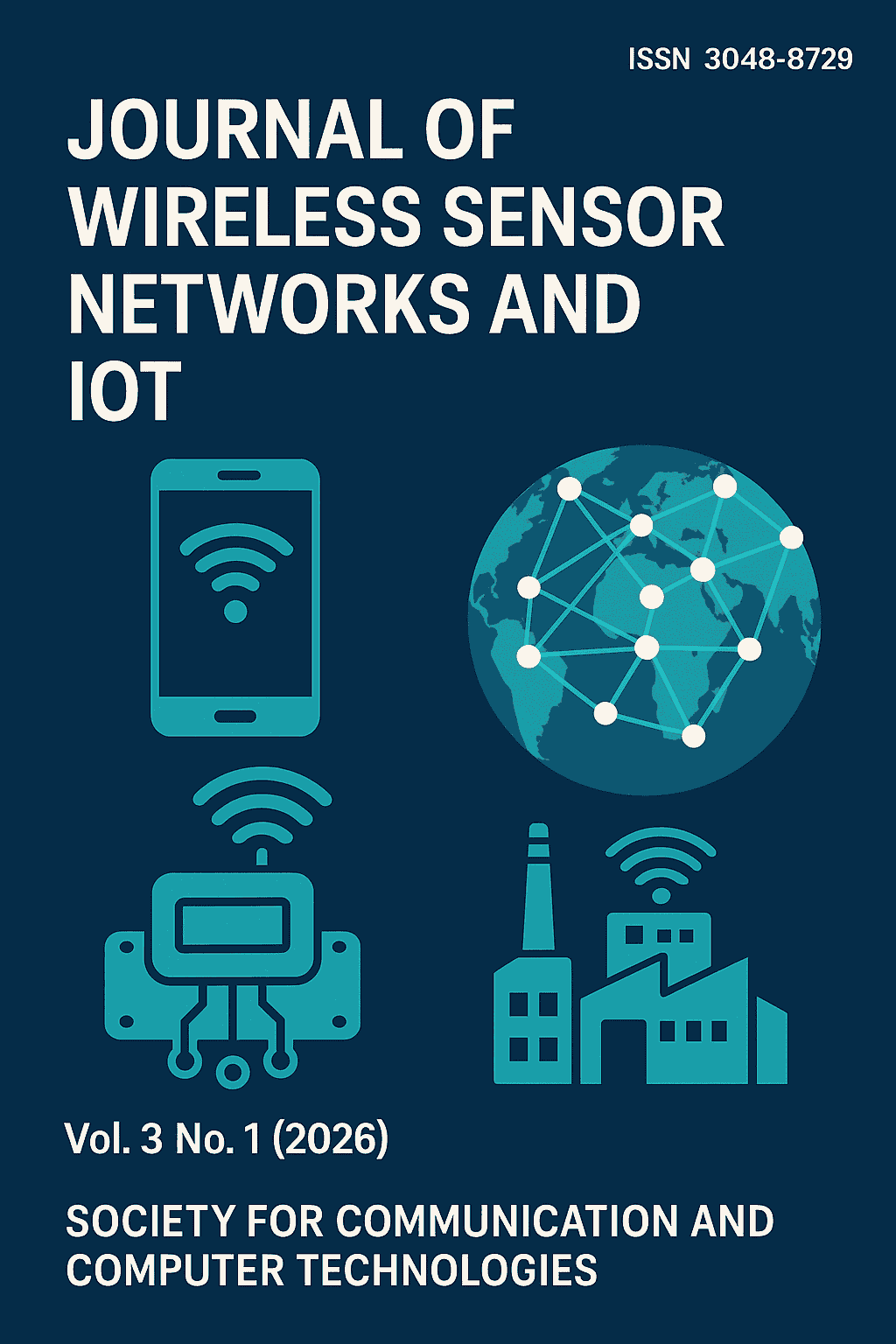AI-Driven Anomaly Detection Framework for Industrial IoT Using Edge-Enabled Wireless Sensor Networks
DOI:
https://doi.org/10.31838/WSNIOT/03.01.05Keywords:
Industrial IoT (IIoT), Wireless Sensor Networks (WSNs), Edge Computing, Anomaly Detection, Autoencoders, LSTM, Edge AI, Real-Time Monitoring, Fault Detection, AI at the EdgeAbstract
Industrial Internet of Things (IIoT) is becoming more dependent on Wireless Sensor Networks (WSNs) to monitor real-time asset and process. Nonetheless, identifying the anomalies in streaming data with high throughput is difficult as there is latency, a low bandwidth available, and low computing capabilities of the edge devices. This paper suggests an AI-based anomaly detection model capable of operating in the specific context of latency-sensitive industrial application with an edge-enabled WSN-based implementation of lower latency, distributed analysis. The architecture combines the use of lightweight Convolutional Autoencoders (CAEs) and Long Short-Term Memory (LSTM) models on edge devices in finding spatial and temporal anomalies on the parameters including temperature, pressure, and vibration. It also achieved a detection accuracy of more than 95 percent and an inference latency of less than 200 ms by relying on simulation results gathered using NS-3 and TensorFlow Lite. The system has a slight data transmission overhead reduction of 68 percent as compared to traditional cloud-based schemes and allows responding to faults in real-time. A solution that is scalable, energy efficient and reliable in terms of locating anomalies in mission-critical IIoT environments has been proposed based on the framework. The next steps will involve incorporating federated learning to support live industrial applications and the ability to upgrade the model dynamically and the capability of supporting multimodal sensor fusion.






